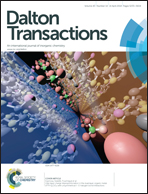PET imaging with multimodal upconversion nanoparticles†
Abstract
A series of new upconversion nanoparticles have been functionalised with tumour-targeting molecules and metal chelates, prepared following standard peptidic and thiol chemistry. The targeting strategy has been delivered via the αvβ3 integrin, which is a heterodimeric cell surface receptor that is up-regulated in a variety of cancers, such as melanoma and breast cancer. The well-known DOTA (1,4,7,10-tetraazacyclododecane-1,4,7,10-tetraacetic acid) motif allows coordination to the radionuclide 68Ga. Radiolabelling experiments were optimised under relatively mild conditions, and are rare amongst nanoparticulate materials. In vivo application of these probes in mouse tumour models revealed their potential as specific cancer contrast agents for PET imaging.


 Please wait while we load your content...
Please wait while we load your content...